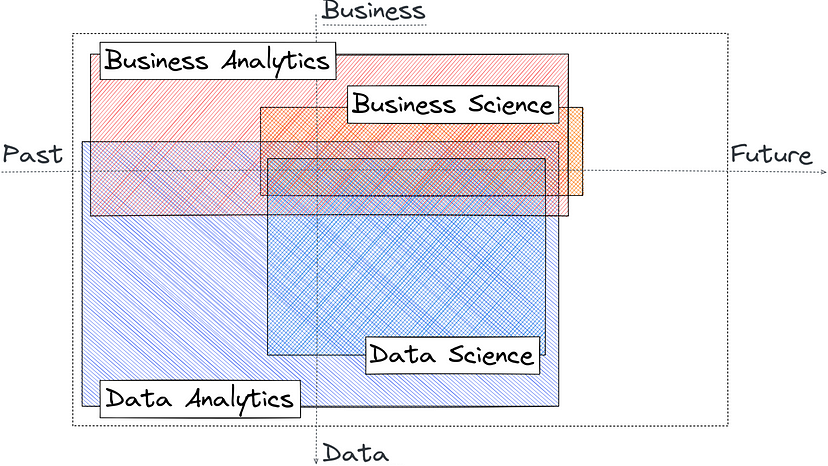
What is the difference between “machine learning” and “artificial intelligence”? What about the difference between “data science” and “data analytics”? And what is this new field “business science” all about?
Terminology in data fields is a mess, causing chaos for both employers and job seekers. Imagine applying for a “Data Scientist” job only to find out that the position is actually for a “Data <Somebody else>.” Not only is it misleading, but it’s a waste of time and resources for both parties. This confusion is prevalent in the data field, where job titles and responsibilities are often used interchangeably, leading to mismatches and frustration.
I’ve been in the field for some time now, so let me share my understanding of what the terms should stand for and share the Euler diagram of my vision.
Setting the Coordinates
To plot most data fields, we’ll use a coordinate schema. This schema will use two primary axes: one for time and one for business-data context. The time axis represents if we’re working with the data already collected, real-time, nearest future, etc. The business-data context axis represents the business/data ratio required for a field.
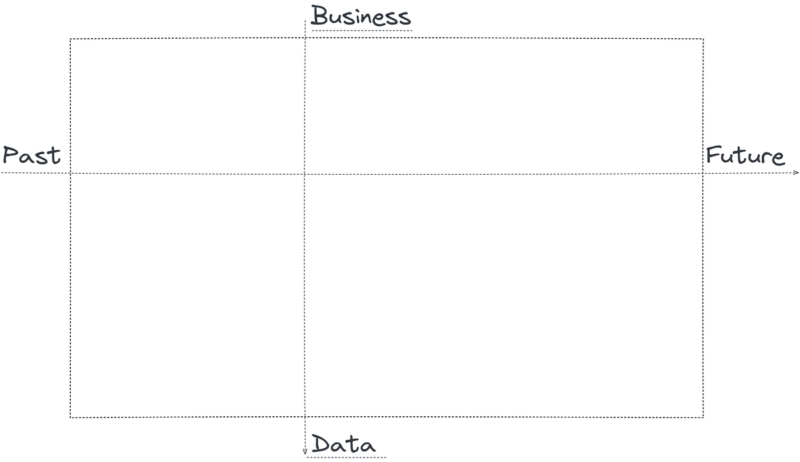
Business and Data Analytics
Despite having many similarities, business and data analytics differ in some significant ways. Business analytics is the study of using data and analytical methods to help organizational decision-making and strategic planning. It comprises consumer analysis, market research, and financial forecasts. Business analytics specialists help business managers and leaders make data-driven choices by offering insights and recommendations.
Data analytics, while overlapping with business analytics, primarily focus on various forms of data analysis, including machine learning, data science, and descriptive statistics. Professionals in data analytics are in charge of drawing conclusions and information from data using a variety of methods. They might be employed in the financial, medical, retail, or tech sectors, to name a few.
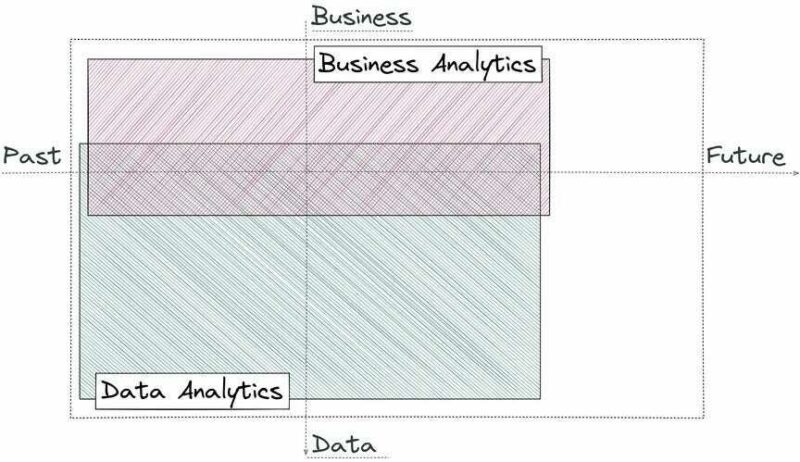
Business Intelligence
Business intelligence (BI) is a collection of tools businesses use to collect, store, access, and analyze information to assist strategic planning and decision-making. It is a field of study that combines data science and business. Transforming data into valuable insights involves various tools, procedures, and best practices.
Business executives and managers should have access to a “single version of the truth” regarding their firm’s performance through BI to make well-informed decisions.
On the business-data scale, business intelligence can be considered as a bridge between data and business.
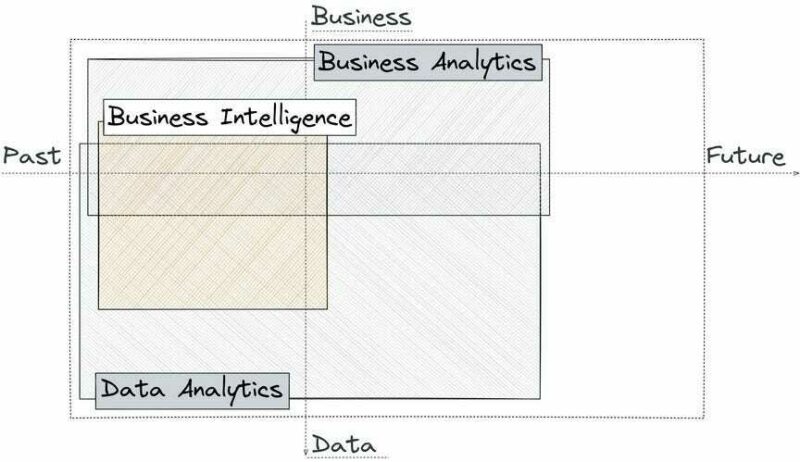
Data Science and Data Engineering
Data science and data engineering are both fields that involve working with data, but they have some major differences in the tasks and responsibilities involved.
Data science is about extracting insights and knowledge from data using statistical, mathematical, and machine learning techniques. It includes data exploration, feature engineering, model building, and evaluation. Data scientists are responsible for using advanced techniques to analyze and interpret data and create data-driven solutions to complex problems and make future forecasts.
On the other hand, data engineering is the process of designing, building, and maintaining the infrastructure and systems that support data collection, storage, and processing. It involves tasks such as data modeling, data integration, data warehousing, data quality, data security, and data governance. Data engineers are responsible for creating the underlying systems and infrastructure that allow for the efficient storage, management, and retrieval of large data sets.
On our scale, data engineering intersects with business intelligence, as it uses data engineering outputs to provide insights and knowledge to business leaders. At the same time, data engineering enables the collection and storage of data that business intelligence can use.

Machine Learning and Artificial Intelligence
Data Science, machine learning, and artificial intelligence are all related fields that involve working with data and algorithms. These terms often get confused, but they have critical differences in focus and scope.
As mentioned above, data science is about extracting insights and knowledge from data using statistical, mathematical, and machine learning techniques.
Machine learning (ML) is a subset of artificial intelligence (AI) and is a method of teaching computers to learn from data without being explicitly programmed (hence the name machine learning). Machine learning algorithms build models from sample data to make predictions or take actions without being explicitly programmed to perform the task. Data science often uses machine learning techniques to extract insights.
Artificial Intelligence (AI) is the broader field that encompasses machine learning and other subfields such as computer vision, natural language processing, robotics, and decision-making. AI is focused on creating machines and systems that can perform tasks that typically require human intelligence, such as making decisions and solving problems.
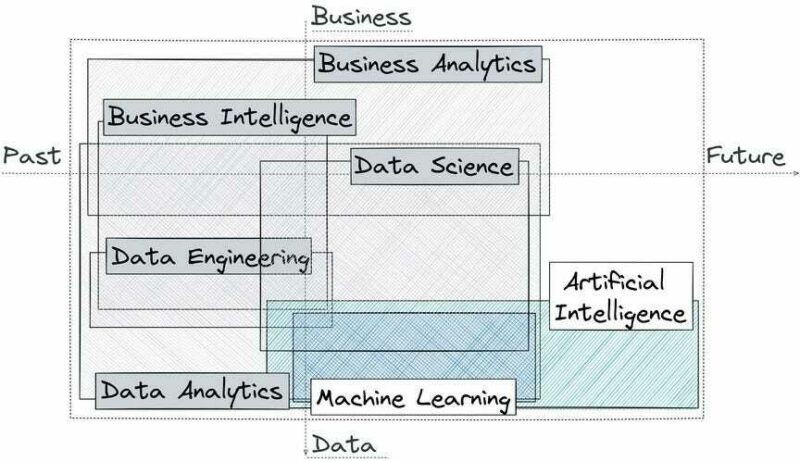
One of the best ways to show the difference between machine learning and artificial intelligence can be shown with the following tweet:

Data Fields All Together
Now we can plot all discussed data fields on our coordinate plot. It has many intersections, some areas belonging to six different fields. It looks messy even after going through it step by step.

It is quite important for specialists, including employers and job seekers, to be aware of the misuse of terminology and to take steps to ensure that the terminology used in job descriptions is accurate and reflective of the actual responsibilities and skills required for the position.
Knowing the differences between various data-related professions is essential to understanding the responsibilities and skills required for each role.
Bonus: What Is Business Science?
Business science comes as an interdisciplinary field that combines elements of business and data science to help organizations make data-driven decisions. It is a relatively new field that emerged in response to the growing need for professionals capable of bridging the gap between data science and business, offering insights and recommendations to business leaders and managers.
Business science and business intelligence are both fields that involve using data and analytical techniques to support decision-making and strategic planning in organizations. Still, they have key differences in their focus and scope, particularly regarding past and future decisions. BI typically uses historical data to understand past performance and identify trends, whereas business science will mainly provide predictions about future performance based on data analysis.
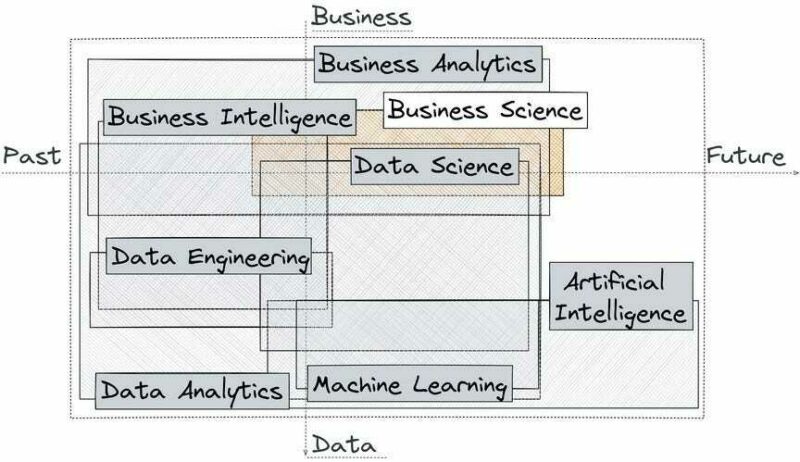
Business science professionals will use data science techniques to analyze business data and extract insights. They also use their understanding of business concepts such as marketing, finance, operations, and others to contextualize the data and provide suggestions and recommendations to decision-makers.
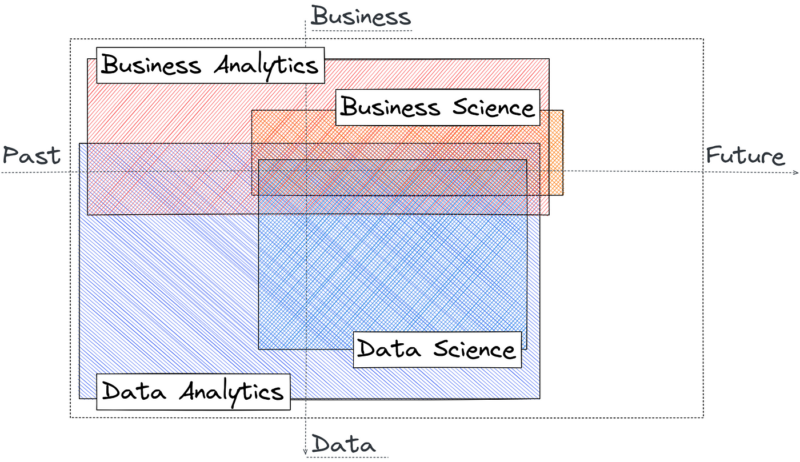
Business science is closely related to other fields, such as business analytics and data science. To understand the role and future of business science, you can compare the similarities and differences between the four fields.
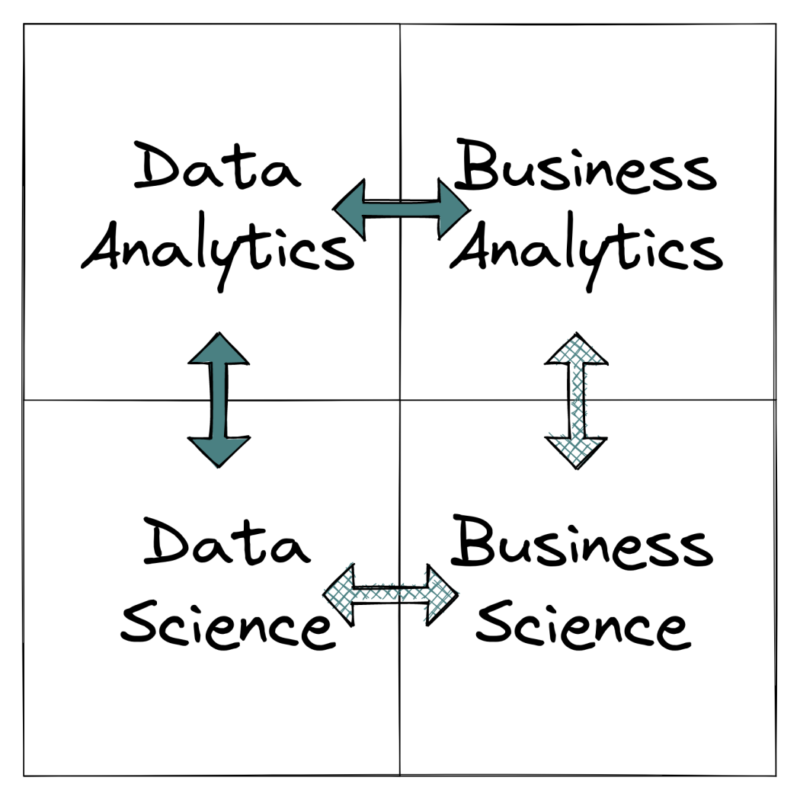
What do you think about the future of business science?
Send us a message if you have experience applying to a certain position just to learn the title doesn’t match the responsibilities.
This article was sourced on Towards Data Science. Originally published on LinkedIn.